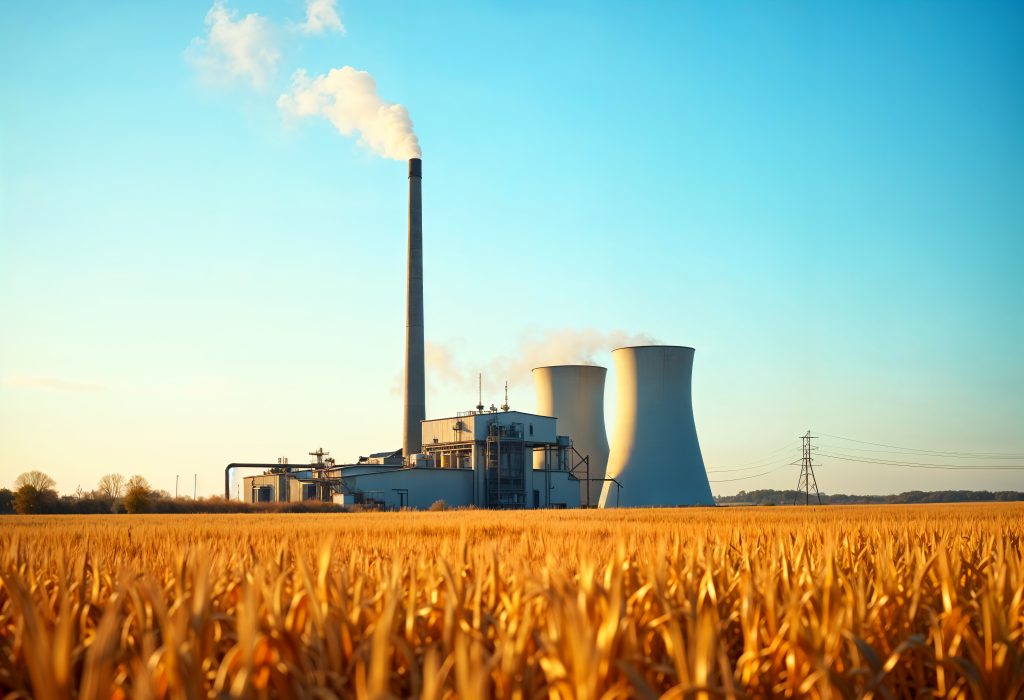Introduction
The present case note analysis the judgment Case C‑626/22, a preliminary ruling referred by the District Court of Milan, to the Court of Justice of the European Union (CJEU), through three questions for interpretation of the Industrial Emissions Directive (integrated pollution and prevention control) (Directive 2010/75)[1], in light of the original dispute concerning the Ilva Plantation, one of the largest steel production plants in Europe.
The purpose of the preliminary ruling is to clarify if Ilva Steelworks is operating in agreement with the Directive and to apply the proper interpretation of the Law when examining the original case.
After providing the factual and legal backgrounds, I will provide the rationale of the Courts answers, and an assessment of its impacts.
Factual background
The case was brought to the District Court of Milan by C.Z. and Others, a group of residents from the municipality of Taranto, Italy, and adjacent municipalities, against Ilva SpA in Amministrazione Straordinaria (Ilva Plant), Acciaierie d’Italia Holding SpA and Acciaierie d’Italia SpA.
It focuses on Ilva, a steel plant owning company which operates in Taranto and holds special status under Italian law, as a “plant or facility of strategic national importance” for its economy impact and importance on employment and production.
The company’s emissions have been subject to legal issues[2] and its activities have been considered to have a negative impact on the environment and health of residents.
Taranto and additional municipalities also hold a special status, of Site of National Interest, due to the urgent need for environmental rehabilitation resulting from exposure to toxic chemicals, and the United Nations Human Rights Council considered the region of Taranto a “sacrifice zone”.[3]
Adding to that, the Assessments of Adverse Effects on Health (AAEHs)[4] made a direct connection between the health state of the Taranto residents and the emissions released by the industrial plant, particularly PM10 particular matter of industrial origin.
Considering this, CZ and others filled a dispute concerning pollution levels and consequential damage to health.
Legal background
The case concerns the control of industrial emissions, regulated in the European Union by Directive 2010/75/EU, under which the Republic of Italy is liable[5].
The Directive should be considered in light of the Treaty of the Functioning of the European Union (TFEU), which sets goals for the Union’s policy on environment[6] and establishes steps of actions to achieve those goals.[7]
C.Z and others claim a deliberate infringement of their rights to health, peace, tranquility in the conduct of their lives and to the climate by pollution-causing conduct of the Ilva Plantation.
Their locus standi relies on the Cordella and Others v Italy[8], an EtCHR case which accused Italy of not taking the necessary measures to protect the residents’ health affected by toxic emissions from the Ilva plant.
Similarly, this collective action calls for an injunction, specifically the removal of the ‘unfair exposure to risk’ posed by the operations of the plantation[9] to the rights expressed above[10], criticizing the special status given to Ilva Plant and consequently the extension of the deadline to implement the Integrated Environmental Permit (IEP) under ‘Decree-Law No 207/2012’, which considers Ilva a ‘plant or facility of strategic national importance’[11] and authorizes it to continue their activities despite the status of the IEP.
The referring court notes that there is only a potential link between the AAEHs and the IEPs[12], and that national law doesn’t provide that the results of the AAEHs lead immediate or definite reconsideration of the permit, even if the assessment shows an unacceptable risk to health. However, the Court recognizes that national legislation potentially violates Directive 2010/75, especially in view of the precautionary principle.[13]
It also acknowledges that the special rules granted to the Ilva plant allowed for the reconsideration of the IEP to ignore the ‘Supplemental Set’ of polluting substances (includes ones from the AAEH report, PM10 and PM2.5) and the impacts on the population of Taranto. They also allowed for the extension of the IEP requirements’ implementation.[14]
Under Article 267 TFEU, the Italian District Court of Milan referred the following questions for interpretation of Directive 2010/75 to the CJEU:
– ‘May Directive [2010/75], in particular recitals 4, 18, 34, 28 and 29 and [Article] 3(2), [and Articles] 11, 12 and 23 thereof, together with the precautionary principle and the principle of the protection of human health referred to in Article 191 TFEU …, be interpreted as meaning that a Member State may, on the basis of a national law, provide that the Assessment of Adverse Effects on Health … is an act falling outside the scope of the procedure for the grant and [reconsideration] of the Integrated Environmental Permit … – in this instance [the 2017 Decree of the President of the Council of Ministers] – and that the drawing up of [that assessment] need not have any automatic consequences in terms of its timely and proper consideration by the competent authority in the context of an [Integrated Environmental Permit]/[Decree of the President of the Council of Ministers] [reconsideration] procedure, especially where [that assessment] indicates an unacceptable health risk for a significant population affected by the polluting emissions, or may that directive rather be interpreted as meaning that:
(i) the tolerable risk to human health may be assessed by means of a scientific, epidemiological analysis;
(ii) the [Assessment of Adverse Effects on Health] must be an act coming within the scope of the [Integrated Environmental Permit]/[Decree of the President of the Council of Ministers] grant and [reconsideration] procedure, and indeed a necessary prerequisite of that procedure and one demanding mandatory, proper and timely consideration by the authority having competence to grant and [reconsider] the [Integrated Environmental Permit]?
– May [Directive 2010/75], in particular, recitals 4, [15], 18, 21, 34, 28 and 29 and [Article] 3(2) [and Articles] 11, 14, 15, 18 and 21 thereof, be interpreted as meaning that, on the basis of a national law, a Member State must provide that the Integrated Environmental Permit (in this instance, [the 2012 Integrated Environmental Permit], [the 2014 Decree of the President of the Council of Ministers], [the 2017 Decree of the President of the Council of Ministers]) must always take into account all the emitted substances which have been scientifically shown to be harmful, including fractions of PM10 and PM2.5, and which originate from the plant under assessment, or may that directive be interpreted as meaning that the Integrated Environmental Permit (the administrative decision granting authorisation) need cover only polluting substances identified in advance by reference to the nature and type of industrial activity being carried on?
– May Directive [2010/75], in particular recitals 4, 18, 21, 22, 28, 29, 34 and 43 and [Article 3(2) and (25)] [and Articles] 11, 14, 16 and 21 thereof, be interpreted as meaning that, on the basis of a national law, a Member State may, where an industrial activity is creating a serious and significant threat to the integrity of the environment and human health, extend the period within which the operator must bring the industrial activity into line with the permit granted, by carrying out the environmental protection and health protection measures and actions provided for therein, by approximately seven and a half years from the deadline initially set, giving a total period of [11] years?’
Legal reasoning
Regarding the first question, the court interpreted the Directive through a contextual approach, bearing in mind the goals of protecting the environment and human health as part of the Union’s policy.[15]
Considering the Ilva Plant falls within the definition and scope of activities which require a permit[16], the court analyzed its obligations and those of the Member State in which It operates, and found that, operators of installations must ensure that no significant pollution is caused[17] and that States should ensure that the application permits includes a description of the nature and quantities of expected emissions and the identification of significant effects on the environment.[18]
These provisions would be part of the prior assessment of the activities and done by the AAEH, but also important for the process of reconsideration of the permit. The court applied the provision on reconsideration and updating of permit conditions[19], indicating there should be a continuous assessment of the effects of Ilva as a way of ensuring compliance of the operator to its basic obligations under Article 11 of the Directive. [20]
The court found, then that the Directive should be interpreted as meaning that the prior assessment of the environmental and health effects resulting from the plants activities must be included in the granting or reconsideration of the permit.
For the second question, the courts relied on a contextual and textual interpretations of the law, on the opinion of the Advocate General and, on a previous court decision.
According to the Directive, Ilva’s application for permits must include the nature, quantities and significant effects of the expected emissions[21], and through a textual interpretation of Article 14, the court noted that there is another layer to this obligation, as emissions values shouldn’t be limited to the substances listed in Annex II, and include any other possible substance. [22]
The court also considered a contextual interpretation of EU Law and focused on the preventive principle of the Directive[23], the combination of these provisions would include the PM10 and PM2.5 substances referred to in the question and make it necessary for them to be acknowledged in the Permit.
Since the provisions state obligations for “foreseeable” emissions, the court referenced the Advocate General’s opinion that, for the reconsideration of permits[24], the “experience gained from the operation” should be taken in consideration and the values should be updated according to the “emissions already established”.[25]
The court then decided that the Directive should be interpreted as meaning that besides the already established substances in Annex II, authorities must also consider any substance expected to be emitted from the plant that is scientifically considered harmful to their assessment when granting or reconsidering permits, including the ones not initially considered on the authorization procedure.
Lastly, for the third question, the court interprets the Directive through a historical approach, looking at the original Directive 96/61/EC[26], its replacement Directive 2008/1/EC[27], and the recast by Directive 2010/75. It also considers the judgement of Commission v Italy.[28]
Because the question is regarding the extension of period for compliance, the court notes that according to the Commission v Italy judgement, the referring state had already failed to comply with the original deadline for compliance of the Ilva Plant, provided for by Directive 2008/1.[29]
Considering the recast of that Directive, Italy had to impose the obligations adopted to installations such as the Ilva Plant staring from 2014 and had until 2016 to update its permit conditions to the new provisions, having been given a time of four years to adapt to the new requirements.[30]
With that in mind, the court added that Italy had an obligation[31], to take the necessary measures to ensure immediate compliance in cases of breach of permit conditions. In addition, the Ilva plant had to take measures to restore the conditions within the shortest possible time.
The Court then decided that the Directive should be interpreted as impeding national law from repeatedly extending the period granted to the operator to comply with the measures of environmental and health protection. It also referenced Article 8(2), stating that operations should be suspended when the activities from an installation present significant risk to the environment and health.
Critical assessment
The Ilva Plant, considered an “ecological monster”[32], has been subject to public and legal debate. Regarding the severity of the situation, the present judgement could help contain ‘the monster’ by complementing the decision of Commission v Italy.[33]
I share the opinion of Johan Callewaert that, both cases provide different approaches to relatively the same end-goal. While the ECtHR sets the “what” as the objective of decontamination of the area and leaves the means for that to the State, the CJEU sets the “how” and creates sort of a set-by-step indication of how the Parties should proceed.[34]
Although different, these judgements combined create a strong legal framework for the control of environmental and health damage caused by the Ilva Plant and by Italy’s inaction. It is my belief that both courts’ interpretation pose a strong position regarding industrial emissions and Member States’ accountability which could be used as precedent when discussing polluting substances[35] in future industrial emissions and environmental cases.
Considering the impact that industrial emissions have on air quality and overall human health, the present case also represent the relevant bridge between environmental protection and Human Rights protection, two very intertwined fields of law that are becoming increasingly relevant in the context of fighting climate change and promoting Just Transition and sustainable development.
In that sense, I believe the direction in which the Court decided is an important step towards ensuring prevention and accurate protection of European citizens from environmental damage, highlight the relevance of the decision and the importance of this case along with the Commission v Italy of the ECtHR.
Conclusion
Though the results of the initial dispute depend on the referring court, the CJEU’s established form of interpretation rightly sides with the residents of Taranto, symbolizing a “win” for the enforcement of reducing industrial emissions and safeguarding the rights of European citizens and the environment.
[1] Directive 2010/75/EU of the European Parliament and of the Council of 24 November 2010 on industrial emissions (integrated pollution prevention and control) [2010] OJ L 334.
[2] Particularly in the EtCHR (Cordella and others v Italy [2011], C‑50/10 EU:C:2011:200.).
[3] “Extreme levels of pollution and contamination by toxic substances in which vulnerable and marginalised groups bear a disproportionate burden of the health, human rights and environmental consequences as a result of exposure to pollution and hazardous substances.” Human Rights Council of the United Nations, ‘Report of the Special Rapporteur on the issue of human rights obligations relating to the enjoyment of a safe, clean, healthy and sustainable environment’ (2022).
[4] From 2017,2018 and 2021.
[5] Legislative Decree No 152/2006 on Environmental Rules of April 3rd, 2006, includes regulation of industrial and manufacturing activities and implements Directive 2010/75.
[6] Article191(1), (2) TFEU.
[7] Article 191 (1), (2) TFEU.
[8] Cordella and others v Italy [2011], C‑50/10 EU:C:2011:200.
[9] Using as a foundation the AAEHs and the Report from the Human Rights Council mentioned above.
[10] Summary of the request for a preliminary ruling pursuant to Article 98(1) of the Rules of Procedure of the Court of Justice, October 3rd 2022, available at: https://curia.europa.eu/juris/showPdf.jsf?text=&docid=268143&pageIndex=0&doclang=EN&mode=req&dir=&occ=first&part=1&cid=13701944
[11] Article 1(1) of the Decree-Law 207/2012 defines ‘plant or facility of strategic national importance’ “ where it is absolutely imperative to protect employment and production, the Minister for the Environment and the Protection of the Land and Sea may, when the Integrated Environmental Permit is reconsidered, authorise the continuation of the activity in question for 36 months, on condition that the terms and conditions imposed in the decision reconsidering the Integrated Environmental Permit concerned are complied with, even where the judicial authority has seized the undertaking’s assets without prejudice to the carrying on of that undertaking’s business activity.” Point 28 of the judgment.
[12] Italian law doesn’t state that the AAEHs should be considered as part of the procedure for the grant or reconsideration of the IEP.
[13] Point 40 of the Judgement.
[14] Point 41 of the Judgement.
[15] The connection between environment and health and the EU’s responsibilities are expressed in Articles 191 and 192 TFEU, Articles 35 and 37 of the Charter of Fundamental Rights and on the Directive 2010/75, which lays down EU’s policy obligation. Paragraphs 67 to 72 of the Judgement.
[16] Articles 4 and 3(3) of Directive 2010/75.
[17] Article 11(c) Directive 2010/75, point 82 of the judgment.
[18] Article 12 (1)(f) of Directive 2010/75, point 83 of the judgement.
[19] Article 21(5)(a) of Directive 2010/75 states that permits should be reconsidered when the pollution caused is so high it no longer fits in the existing emission limit values of the permit.
[20] Point 94 of the Judgement.
[21] Article 12(1)(f) of Directive 2010/75.
[22] Point 110 of the Judgement.
[23] Under which the authorization of substance emissions must linked to the degree of harm they generate
[24] Article 21 of Directive 2010/75.
[25] Point 133 of Opinion of Advocate General Kokott.
[26] Council Directive 96/61/EC of 24 September 1996 concerning integrated pollution prevention and control [1996] OJ L 257.
[27] Directive 2008/1/EC of the European Parliament and of the Council of 15 January 2008 concerning integrated pollution prevention and control [2008] OJ L 24.
[28] See footnote 8.
[29] Directive 2008/1 established the deadline for compliance of already existing installations as October 2007. Italy was accused of violating that Directive, considering the permit for the Ilva plantation was only granted in 2011.
[30] Directive 2010/75 provided installations a period of four years to adapt and update the Permit conditions to new techniques. The four years were to start counting from the date in which the permit was granted, so for the Ilva plant from 2011 to 2016. Paragraph 126 of the Judgement.
[31] Under Article 8(1)(2) of Directive 2010/75.
[32] Andrea Barolini, ‘The Ecological Monster that Italy does not want to close’ (2014) Reporterre <https://reporterre.net/Le-monstre-ecologique-que-l-Italie-ne-veut-pas-fermer> accessed December 2024.
[33] Johan Callewaert, ‘Environmental pollution caused by the Ilva steelworks – judgment of the CJEU in Ilva and Others, compared with Cordella and Others v. Italy’ (2024) Prof. Dr. iur. Johan Callewaert <https://johan-callewaert.eu/environmental-pollution-caused-by-the-ilva-steelworks-judgment-of-the-cjeu-in-ilva-and-others-compared-with-cordella-and-others-v-italy/> accessed December 2024.
[34] Johan Callewaert (n33).
[35] See ‘Legal Reasoning’ of the second question asked by the Referring court on which polluting substances should be considered for the granting or reconsideration of the permit.



